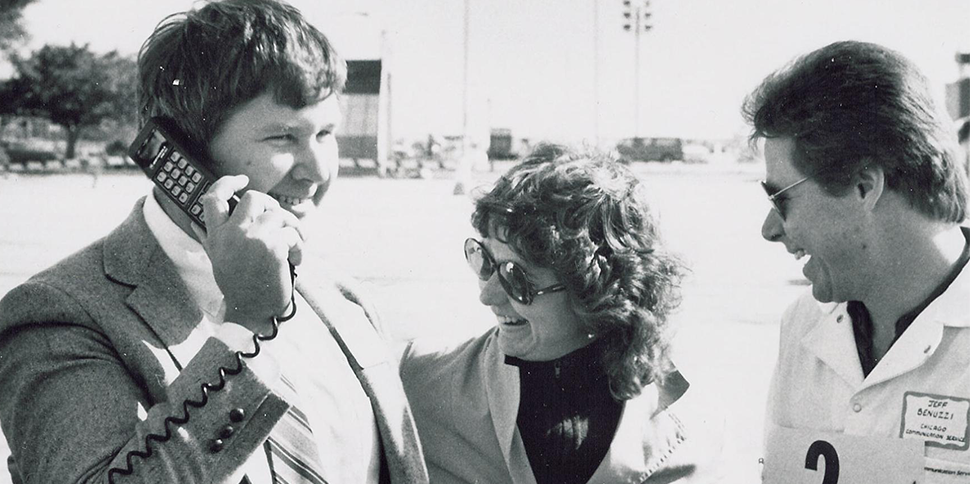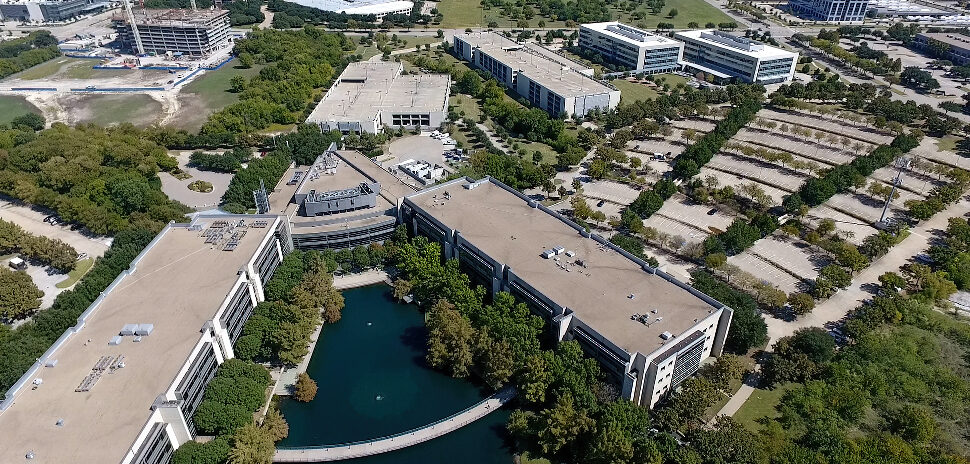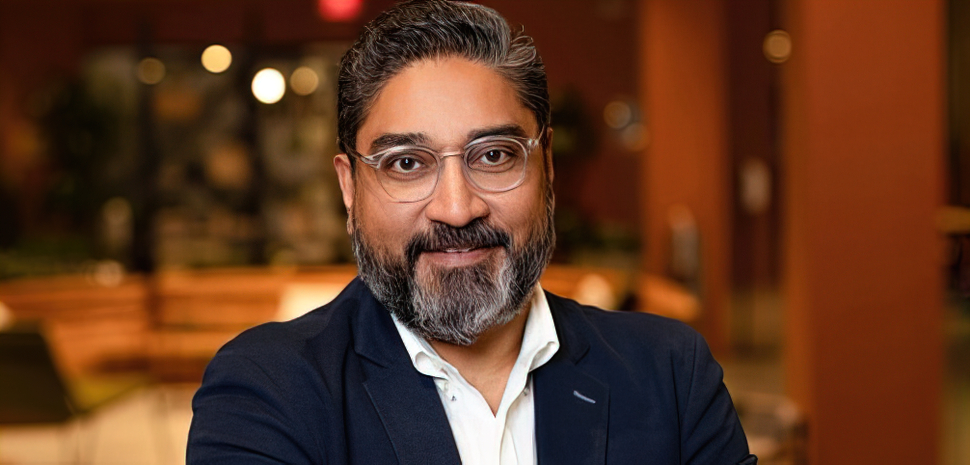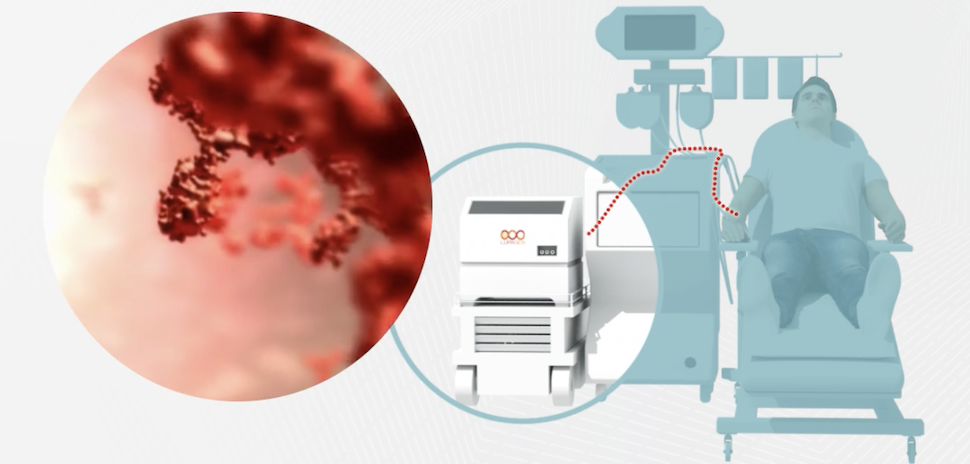Thriller hit the top of Billboard music charts, Sally Ride blasted into history as the first American woman in space, and the Reagan White House was tackling communism. The year was 1983.
Meanwhile, in Chicago, a call was made that gained far less notoriety, but would transform communication—and society—forever.
On October 13, 1983, AT&T launched the first commercial cellular telephone service—which represented more than 30-years of trying, failing, and pivoting.
It was 1947 when a researcher named Douglas Ring first conceptualized a ‘cellular network’ that would allow you to make calls as you move from point to point—in other words, stay connected on the go. Twenty-five years later, in 1972, Stu Tartarone joined the AT&T Bell Labs team that would bring that idea to reality—leading to the historic day in the early 1980s.
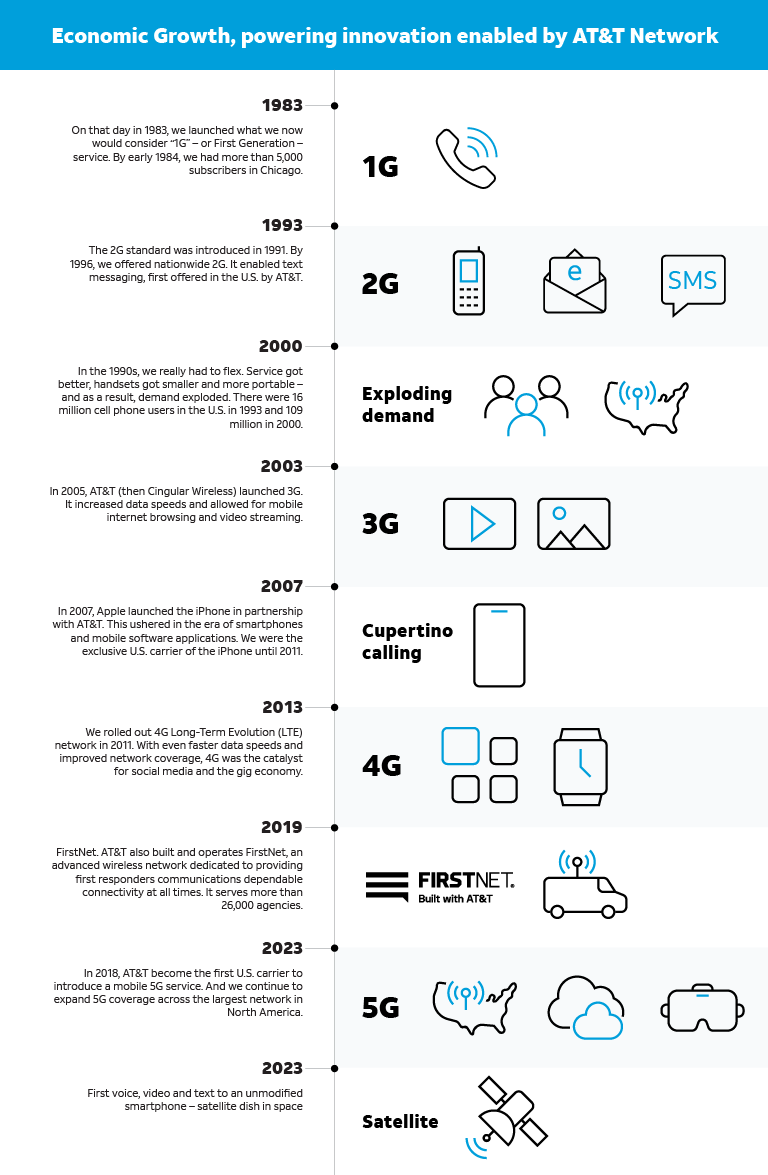
Cell-ebrating 5,000 to 5 billion-plus: Here’s a by-the-numbers look at AT&T’s pioneering impact. Click here to view the timeline.
Until that point, people thought of the telephone as a device in a fixed location, like your home or your office, used to talk to someone in another location. By February 1984, the company counted more than 5,000 subscribers in Chicago, and AT&T soon launched in other markets that same year. The way we consume information was about to change forever.
“The first 10 years of cellular was really about providing voice services for those that needed to be connected on the go,” said Gordon Mansfield, vice president, Global Technology Planning, AT&T. “This was accomplished via ‘analog’ cellular services which started with car phones, followed by bag phones and then portable phones often referred to as bricks which was limited to a number of users.”
Then 2G came along.
“Services transitioned to ‘digital’ which enabled smaller, more cost affordable devices, and that led to greater proliferation of cellular services for the masses,” said Mansfield.
This was in the early 1990s. For context, in 1993, there were 16-million cell phone users in the United States. Seven years later that number had grown to 109 million. Ninety-three million people – about 130 packed Cowboy’s Stadiums—became cell phone users by the year 2000.
So what’s next? In a word, convergence. Customers today don’t think about individual technologies. They depend on the ‘connected experience’—whether they’re at work, home, the car, a concert … and Mansfield says this kind of customer experience will only work with a combination of wired and wireless networks.
“Our wireless and wired networks are complementary to each other —that includes our fiber optic service. We’re even exploring expanding into areas like satellite connectivity.”
More than making our “Jetson’s-dreams” come true, such convergence will accelerate medical discoveries, enable safer travel, and create opportunities and experiences we can’t even conceive of yet. Mansfield says the technology we now think is impressive is really the launch pad that will propel us into a new reality.
Of her shuttle mission, Sally Ride compared the moment of launch to sitting on a big explosion—Mansfield says that’s an apt comparison to where communication technology is right now. And to think, it all started with one call in Chicago forty years ago.
Voices contributor Nicole Ward is a data journalist for the Dallas Regional Chamber.
![]()
Get on the list.
Dallas Innovates, every day.
Sign up to keep your eye on what’s new and next in Dallas-Fort Worth, every day.

